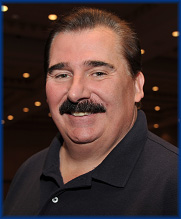February 20th, 2016 by Dr. Val Jones in Opinion
6 Comments »
 Hope is a tricky thing. On the one hand, false hope can lead patients to opt for painful, futile treatments at the end of life. On the other, unnecessarily bleak outlooks can lead to depression and inaction. When health is at stake, presenting information with the right amount of hope can guide patients away from both suffering needlessly and/or succumbing to treatable disease.
Hope is a tricky thing. On the one hand, false hope can lead patients to opt for painful, futile treatments at the end of life. On the other, unnecessarily bleak outlooks can lead to depression and inaction. When health is at stake, presenting information with the right amount of hope can guide patients away from both suffering needlessly and/or succumbing to treatable disease.
I was reading a sad story about a patient whose physician had made her feel hopeless. She was an elderly widow with some real, but not immediately life-threatening, medical conditions. His attitude led her to believe that she was sick and useless – with little to look forward to but ongoing testing, disease progression and eventual death. His professional opinion held special weight for her, coloring her entire outlook. It wasn’t until a friend reminded her of the doctor’s fallibility that she began to question her diagnoses, treatment options, and even prognosis.
When faced with concerning new medical diagnoses, even the most educated among us tend to imagine the worst case scenario. Knowing this, physicians should take care to offer reassurance and optimism whenever it is warranted. Hope provides the energy to course correct, to fight battles that can be won, and to hold on to trust in a brighter future. Why be stingy with it when it is so easily given?
As a rehab physician I have regularly encountered bias on the part of healthy people in regards to certain injuries. I hear them whisper, “I wouldn’t want to go on living if I couldn’t walk” or “That poor man’s life must be ruined.” And yet, these feelings are not shared by those fighting the battles. In many cases, losing an ability focuses the mind on what’s important – and on all the things that can still be achieved and enjoyed. Life is a gift, and while we all still have breath – we can make meaningful contributions.
It breaks my heart to see patients lose hope, and it is sadder still when physicians facilitate the loss. What we say carries psychological weight, and we should recognize the duty we have to deliver information with kindness and respect – focusing on the possible, dispelling unreasonable fears, and emphasizing that inner peace is attainable no matter the circumstance.
In healthcare we ought to always have hope – not for perfect health, or longer life – but in our ability to overcome obstacles, to make good come from bad, and to have a positive impact on others. The choice to live our best life is ours to make, no matter the disease or condition. Never let a doctor steal your hope, but adopt the rehab mission: to add life to years.
November 18th, 2011 by KerriSparling in Expert Interviews
1 Comment »

The Diabetes Research Institute is one of those places that, walking through its halls, you feel inspired. (I feel the same way when I walk through the Joslin Clinic in Boston – true diabetes magic happening there.) The people there are focused solely on finding a cure for diabetes, and that’s a mission I can truly get behind. Today, the DRI’s Tom Karlya is sharing some information on the Reason to Believe campaign.
* * *
Kerri: Hi Tom! You and I have worked together in the past, and I’m very familiar with your passion for finding a cure for this disease that both your kids and I share. For those who don’t know, what is the Diabetes Research Institute and what is your role there?
 Tom: Thanks Kerri, over the years it has been exciting to work alongside you to help the diabetes community.
Tom: Thanks Kerri, over the years it has been exciting to work alongside you to help the diabetes community.
The DRI is the largest and most comprehensive research center in the world with a multidisciplinary team of scientists passionately committed to curing diabetes in the fastest, safest and most efficient way possible. We are solely dedicated to curing diabetes by finding a biological cure – restoring natural insulin production in patients. This has been and will continue to be our singular focus until that goal is reached. And it will be reached.
Kerri: I’ve heard a lot about the Diabetes Diplomats, and I know that outreach effort has engaged an amazing group of people. Who are the Diabetes Diplomats, and what are they all about? Read more »
*This blog post was originally published at Six Until Me.*
October 22nd, 2010 by Edwin Leap, M.D. in Better Health Network, Research, True Stories
No Comments »

This weekend is the Western Carolina Walk for the Cure for Juvenile Diabetes. Our son Seth is 13, and has been diabetic since age five. The Walk is one of our favorite yearly events. More than that, the idea of a cure is one of our favorite dreams!
Seth has come a long way. He wears an insulin pump, and is now wearing a continuous glucose monitoring system. His chances of long-term complications, such as blindness or renal failure, are remarkably low compared to what kids faced in past decades.
His physician, Dr. James Amrhein of the Greenville Hospital System, is outstanding. He and his outstanding nurse practitioners brought us through the shock and trials of diabetes with great compassion and understanding. He offered us that precious commodity: Hope. Read more »
*This blog post was originally published at edwinleap.com*
May 3rd, 2010 by BobDoherty in Better Health Network, Health Policy, News, Opinion, Research
1 Comment »

I just got back from a wonderful week in Toronto, Canada. No, I wasn’t up there to take tips on how to impose socialized medicine on an unsuspecting public, notwithstanding what some of you may incorrectly-surmise about my political leanings.
Rather, I was there to attend ACP’s annual scientific meeting, during which I had the opportunity to serve as faculty for three separate scientific sessions that discussed the impact of the new Patient Protection and Affordable Care Act (PPACPA) of 2010 on internists and their patients. Several hundred ACP members attended these sessions.
And guess what? Rather than encountering doctors who were angry at the new law and ACP’s support for it, I instead found an engaged and curious group of internists who are looking at health reform in a reasoned, measured and open-minded way. Read more »
*This blog post was originally published at The ACP Advocate Blog by Bob Doherty*
 Hope is a tricky thing. On the one hand, false hope can lead patients to opt for painful, futile treatments at the end of life. On the other, unnecessarily bleak outlooks can lead to depression and inaction. When health is at stake, presenting information with the right amount of hope can guide patients away from both suffering needlessly and/or succumbing to treatable disease.
Hope is a tricky thing. On the one hand, false hope can lead patients to opt for painful, futile treatments at the end of life. On the other, unnecessarily bleak outlooks can lead to depression and inaction. When health is at stake, presenting information with the right amount of hope can guide patients away from both suffering needlessly and/or succumbing to treatable disease.


 Tom: Thanks Kerri, over the years it has been exciting to work alongside you to help the diabetes community.
Tom: Thanks Kerri, over the years it has been exciting to work alongside you to help the diabetes community.









